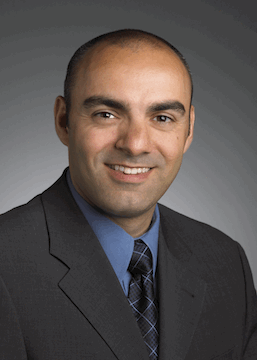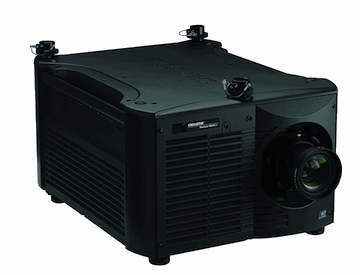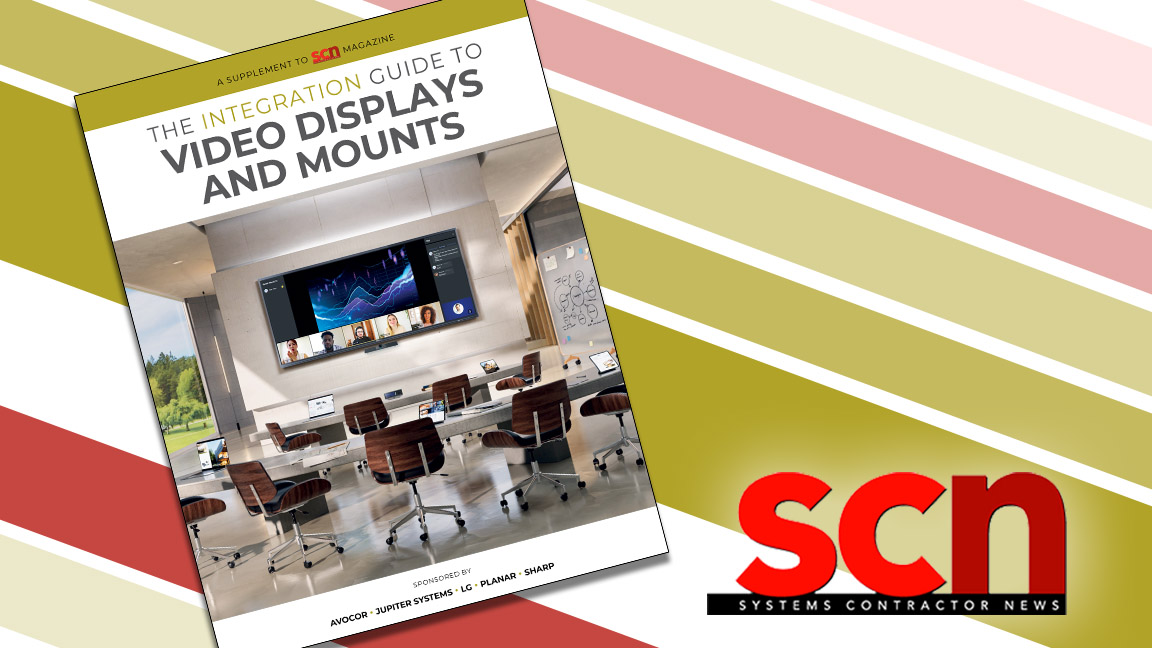High-End Standard

Quick Bio
Name: George Tsintzouras
Title: Senior Director of Product Management, Business Products
Company: Christie Digital
Driving Innovation: Christie continually stays at the forefront of trends by staying in touch with customers and partners to see what challenges they come up with and where they need help. Christie’s goal is to solve these issues and bring compelling solutions.
George Tsintzouras, Christie Digital, senior director of product management, business products
What is your position and what does it entail? How long have you been in this position?
Business products, is the largest group (of three) in the company. It handles marketplaces from staging and rental to boardrooms, and education. That’s where I belong. As a DLP product manager, my job is to bring display solutions to the markets we serve. Display solutions covers a lot of stuff, from high brightness, 3-chip DLP products to 3D products to single chip boardroom projectors.
I’ve been doing this about 5 years, but I’ve been with Christie for 12 years. I was with Electrohome that got bought out by Christie. Electrohome is an almost 100-year old company doing displays and projections. They joined the two teams in 1999 and ever since then we’ve been doing fairly well.
What we do is pretty sexy. We love it here. We love our technology. we love the things we can do with it. Its really cool.
How did Christie get its start?
Christie started in film projectors in the early 1900s. Christie out of the U.S. was doing cinema projectors and baluns and lamp housings. And Electrohome, up in Canada, was doing all sorts of technology, everything from radio to TV sets in wooden cabinets. Then they transitioned into doing the first projectors out of the CRT tubes. They made the first LCD projector that was 1,000 lumens. They were the first to make DLP projectors and partnering up with Texas Instruments. There’s a lot of commonality in our two backgrounds, so when Christie acquired Electrohome, they basically brought the expertise and cinema background to the projection background at Electrohome and created the new Christie.
A daily selection of the top stories for AV integrators, resellers and consultants. Sign up below.
How has Christie changed with the times?
Both companies have always been leading edge innovators in the markets that they service. So while technologies change, we’ve always been able to take our core competencies and really bring them to our customers to solve their problems. We solve the difficult problems and bring to market these innovative solutions.
What is the newest innovation/product from Christie?
The J Series projector.
How is it different from other such products in its category?
Basically, the J series projector is a very high-end projection solution, really targeted at some of the larger venues and some of the types of job functions that are required by people that do rental and staging. So these aren’t simple little projectors that sit on a desk in a boardroom. These are absolute, rugged workhorses. One of the requirements in these sorts of markets are that these things are not only rugged, but are also small and super bright. So one of the things that we do very well—and our system is better than anyone else out there—is our efficiency. If you look at our projectors, they’re the brightest projectors in the market today. And if you take a step back and look a little closer, you’ll also see that they’re the smallest projectors in those categories.
We really do hang our hat on that these are the most efficient, brightest per pound, brightest per watt projectors in the market today.
On top of our efficiency and our expertise in that area, one of the other things we’ve done is invented very high-end features. The ability to map onto complex surfaces and do warping, we’ve included this all standard. This is known as Christie Twist, and in the past, this was something you added on.
One other thing this platform does is enable people a full upgrade path to 3D.
What was happening out in the field that prompted the invention of this product?
The invention of the J Series for us was more of an evolution. We’ve already had products in this category; we’ve had xenon, high brightness projectors, but we wanted to build the next generation of products for that space.

Christie's J Series projector
Which vertical markets does the J Series serve?
When we created this product line, we created two different models. We created a small model that’s under 100 pounds that’s up to 10,000 lumens, and we created a larger model that goes up to 3 kw that targets the higher end, higher brightness applications. We also have a whole bunch of different resolutions—everything from 4 x 3 sx-plus to 61-9 HD to 16 x 10. Then we’ve created different brightness ranges, so the higher series of products can meet each of the different needs of the different markets we put them in.
High brightness targets rental and staging and large venues where you really need the brightness, especially when you start getting into these 3D type of applications; brightness is absolutely a requirement. That’s where a 20,000-lumen projector comes into play.
One the lower level of products, the HD-9J is a 9,000-lumen projector. We’re actually one of the few people in the world that produces xenon projectors in this class of brightness.
The J Series itself is actually targeted at many markets: high color fidelity markets, like post-production, and advertising. We offer the ability for all of these projectors to be 3d-upgradeable in the future.
How has [Christie] adjusted its approach to these markets?
Our approach to the marketplace hasn’t changed; however, we’re continually in touch with the marketplace to see what their challenges are, so we can come up with solutions for them. But we’ve always done that. We’re continually staying at the forefront of trends, we’re continually staying in touch with our customers and our partners to see what challenges they come up with and where they need help. That’s our value, to solve these issues and bring compelling solutions.
What has the feedback been from end-users? installers?
Lindsey M. Adler is an audiovisual storyteller based in New York.

